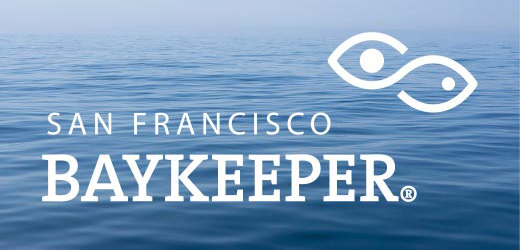Baykeeper recently advocated for changes in San Francisco Bay dredging that would have reduced erosion of Bay and coastal shorelines and better protected endangered Bay species. However, despite growing concerns within the scientific community that dredging the Bay is accelerating the pace of coastal erosion and harming fish—the San Francisco Bay Regional Water Quality Control Board approved the continuation of dredging by the U.S. Army Corps of Engineers.
The Army Corps regularly dredges the Bay floor to keep shipping channels and harbors deep enough to accommodate large ocean-going ships traveling to and from ports and shipping terminals around the Bay and farther up the Delta. They are responsible for approximately 70% of Bay dredging.
Baykeeper advocated for permit improvements that included requiring that sand and mud dredged up from the Bay be used to restore wetlands and protect shorelines from sea level rise. In addition, we recommended that whenever possible, the dredged materials should not be dumped deep in the ocean—an outdated and wasteful disposal method. We also urged the Board to immediately phase out dredging methods that kill endangered species of fish.
San Francisco Bay is a dynamic and shallow water body that rapidly fills shipping lanes, marinas and harbors with sand, silt and mud. Each year, three to four million cubic yards of sediment—or enough to fill the Transamerica Building ten times—is dredged from the Bay. Two methods are used: hydraulic dredges, which vacuum the sediment off the Bay floor, and clamshell buckets, which grab sediment much in the way a backhoe would dig a pit.
From 2000 to 2012, about 50 million cubic feet of sediment was dredged from the Bay, about 7.5 million cubic yards of which was deposited 55 miles outside the Golden Gate in a site referred to as the Deep Ocean Disposal Site. The remainder was either dumped within the Bay or used to build up areas along the Bay to facilitate habitat restoration projects.
Over the last decade, scientists from the United Stated Geological Survey and elsewhere have correlated Bay dredging and sand mining with some of the fastest rates of coastal erosion on the West Coast. Accelerated erosion has been observed for decades along Ocean Beach. More recently, scientists have documented erosion of the San Francisco Bar, an underwater sand bar at the Bay’s mouth that influences water flows and sediment movement in and out of the Bay. Much of this erosion has also been attributed to sand mining and dredging in the Bay.
Environmental documentation prepared in support of the Army Corps’ permits issued by the Regional Water Board did not consider the impacts of disposing dredged sediment in the ocean, which robs the Bay of available sediment that may otherwise replenish coastal beaches, improve flood protection, and build up wetlands in the face of sea level rise. Options include using more sediment to build up wetlands or depositing the mud and sand in areas where they could naturally flow to mud flats and wetlands.
In addition to erosion, Baykeeper is concerned about impacts to endangered fish. We urged the Regional Board to immediately phase out a method of dredging called hydraulic hopper suction dredging, instead of allowing it to continue until 2017. This dredging method kills large numbers of two Bay fish species that are on the brink of extinction, delta smelt and longfin smelt.
According to a 2013 Army Corps analysis, in 2011, their dredging killed between 3 to 29% of the delta smelt population. That estimate was based on looking for fish in a small amount of dredged material, and, if true, suggests disastrous impacts to delta and longfin smelt. Dredging is also supposed to be done at times when fish are less likely to be impacted, but this standard is only adhered to approximately 70% of the time, based on data obtained from regulators.
Despite these concerns, the Regional Water Board’s approved permit allows hydraulic hopper suction dredging to continue and doesn’t alter the timing of dredging to better protect fish.
We still have another opportunity to achieve better dredging practices in the Bay. The Bay Conservation and Development Commission (BCDC) is currently considering an additional set of permits for Army Corps dredging of the Bay. Baykeeper is advocating for the BCDC permits to require protections to ensure minimal wildlife impacts and protection of coastal shorelines and Bay wetlands.


